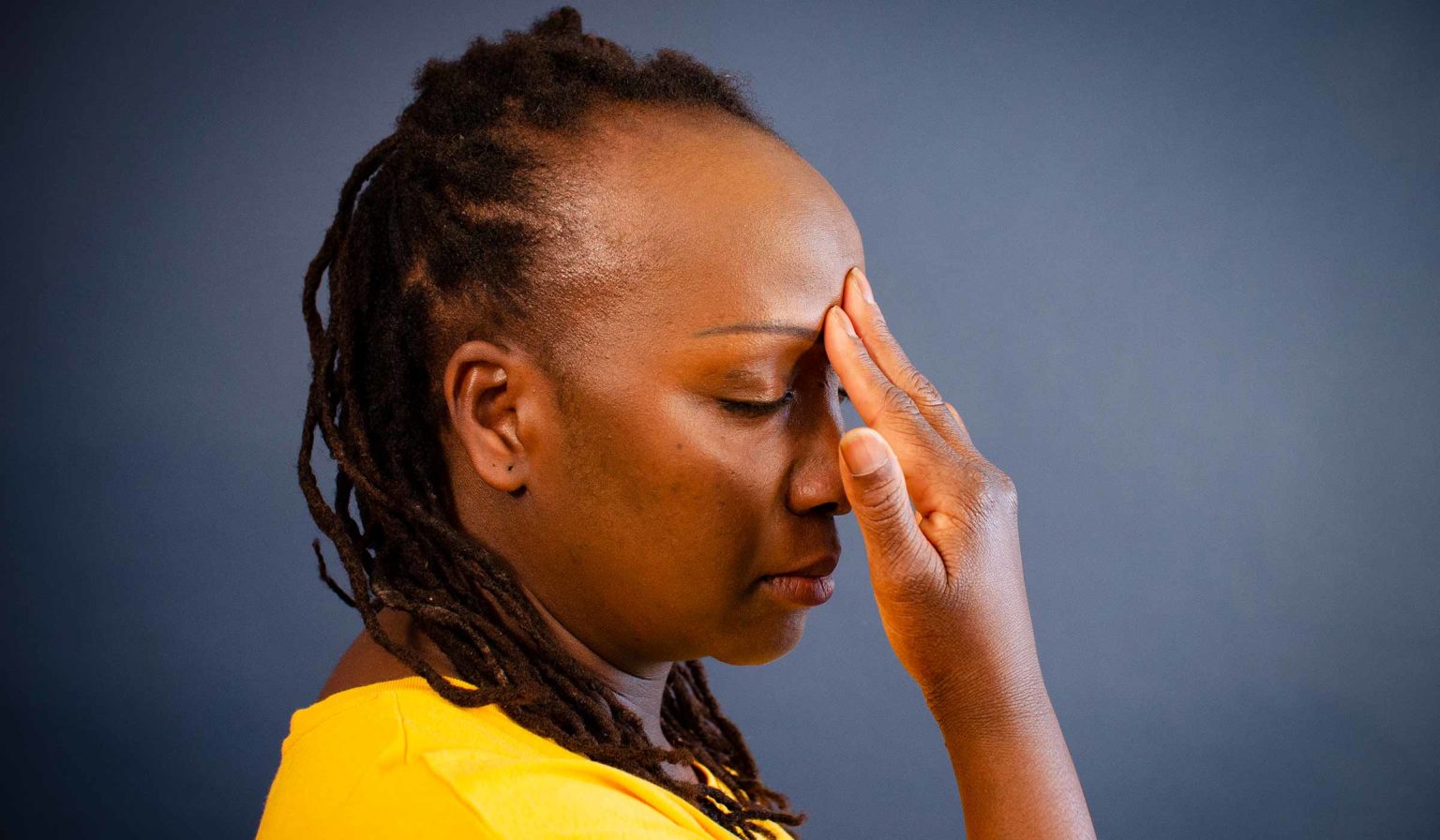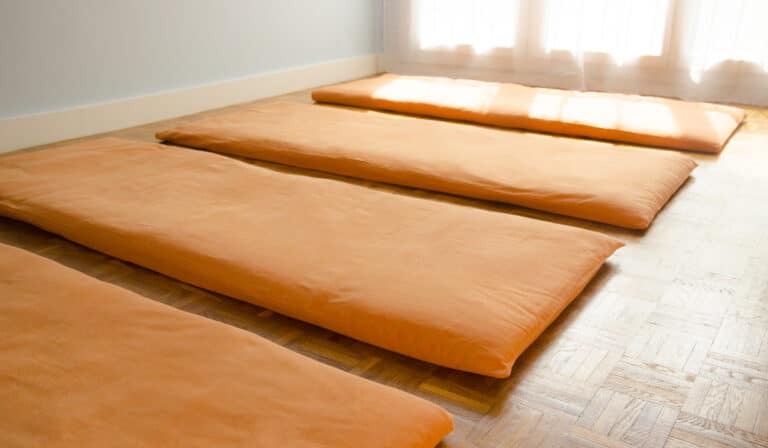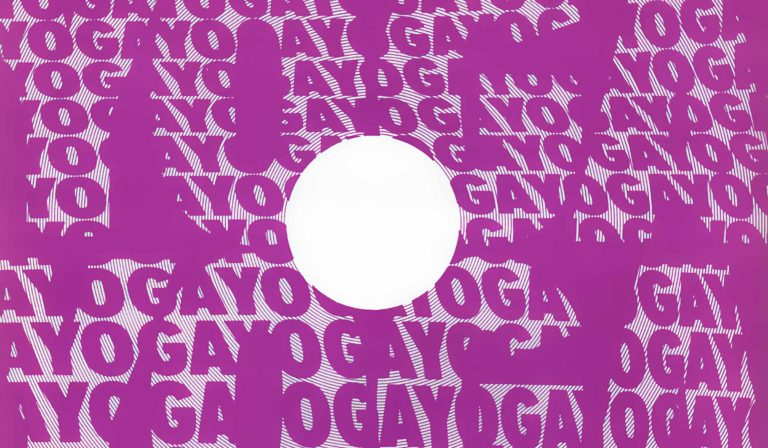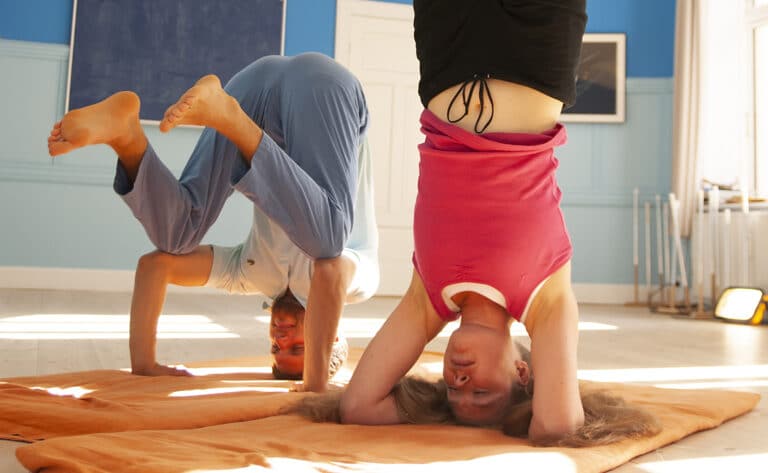If you are exploring yogic breathing exercises, you might ask yourself if there is a correct order to do pranayama. Different pranayamas have different effects, and it could be worth your while putting some thought into getting the order of pranayamas right. A proper sequence assures profound and harmonious results while you can miss out on the benefits and even get adverse effects if you get it wrong. In this article, I will show you how to plan your pranayama practice so that you can get the most out of it.
Do pranayama after asana
Before getting to the correct order to do pranayama, there is the question of practising before or after yoga poses. Pranayamas are subtle exercises. To benefit from them thoroughly, you should practice pranayama after your yoga poses. There are several reasons for that, and to learn more I suggest you read my article about the importance of practising pranayama after asanas.
Having gotten that out of the way, let’s look at how to plan your pranayama sessions.
Different categories of pranayama play different roles
You can divide pranayamas into separate categories that act in different ways and serve distinct purposes. Understanding how these groups differ will help you to plan your pranayama better.
I will be using the names of the pranayamas of my tradition. These names and exercises might not precisely match what you are familiar with. However, you can still use this knowledge to sequence your pranayamas correctly.
These are the five categories that I have chosen:
– Preparatory lying down pranayama
– Forceful breathing followed by a retention
– Practices exploring the limits of the breath
– Calming pranayama
– Meditative Pranayama
We will look at them one by one.
When to do preparatory lying down pranayama
This first group of practices are simple breathing exercises done lying on the back. They are not part of the traditional pranayamas but are nevertheless perfect for loosening up tensions in the breath.
The ones I use often are the following:
- Wave breath
Breath retention accompanied by a movement of the belly that you alternatively push out and pull in.
- Complete breath (some teachers call it the yogic breath)
Complete in-breath that you start by filling first your abdomen, your chest, and then your throat. Then a passive out-breath.
- Spontaneous breath
Just observing the natural breath and the physical sensations that accompany it.
These practices are suitable as a prelude to sitting pranayama or even as initial practice before your asanas. The spontaneous breath can also be a good way to end a pranayama session. However, the two other practices are not useful neither at the end nor in the middle of a pranayama session.
Best time for forceful breathing followed by a retention
Now we are in the territory of pranayama described in ancient Sanskrit texts. The techniques in this group involve forceful breathing followed by kumbhaka, breath retention while at the same time performing energy seals, bandhas.
The initial fast and forceful breathing makes it a lot easier to hold your breath afterwards. The reason is that you lower the level of carbon dioxide in the blood. The carbon dioxide level is the trigger for discomfort as you hold your breath, not the oxygen level. Hence, you can calmly hold your breath considerably longer and thus induce more calm.
Pranayamas in this category :
- Bhastrika
Active in and exhalation 20-80 times. Then retention with lungs filled with air while doing the chin-lock and the root lock.
- Kapalbhati
Active exhalation and passive inhalation 20-80 times. Then retention with empty lungs while doing the chin-lock, the root-lock and the abdominal lock.
These two pranayamas are excellent as the first exercise in a pranayama sitting. They will make all the pranayamas done afterwards easier. However, in my opinion, they are not suitable as a stand-alone practice or as final pranayama. Always follow up with more subtle pranayama to harmonise and integrate the benefits of these two.
When to explore the limits of the breath
In the next category of pranayama, there are exercises you can use to explore how far you can go with your breath retention. There is no initial forceful breath, so instead, you need to be in a calm state of mind as you start. It is best to practice attentively and without effort. That does not mean avoiding resistance, on the contrary. You meet resistance and discomfort with acceptance, and in that way, you can dissolve it.
The ideal moment to do these pranayamas is after Bhastrika or Kapalbhati. Then you will already have softened up the resistance to breath retention.
This category of pranayama includes:
- Surya Bheda pranayama
In breath through the right nostril. Breath retention with chin-lock and root-lock. Out breath through the right nostril.
- Murcha pranayama
In breath through both nostrils. Breath retention leaning on your straight arms, as for the chin lock, but with your head leaning backwards. You fix your gaze in the eyebrow centre.
As with the pranayamas in the previous group, these two liberate nervous tension and the energy held by those tensions. Therefore they are best practised in the middle of a pranayama programme. That way, you can do some calming and harmonising practices afterwards to help to integrate the effects.
Correct positioning of calming pranayama
These are pranayamas that you should do without any effort. They remove stress and anxiety and help to calm down your nervous system. You can do these pranayamas as a stand-alone practice for therapeutic reasons.
This group includes:
Brief breath retention with chin- and root-lock. Exhalation with ears closed, making a humming sound.
- Sheetali pranayama
You roll your tongue to make a tube and inhale slowly through it. Then brief retention with chin- and root-lock.
- Seetkari pranayama (a variation of Sheetali)
When these practices are done together with other pranayamas, they can be placed both in the beginning, middle and end of a pranayama session. But the ideal place would be between pranayamas from the previous groups and Nadi Shodhana pranayama. With such an order, you first get the benefit of pushing the limits of your breath. Then of guiding your nervous system into a calm state.
If you follow the order that I have outlined you will now be ready to go deeper. We have arrived at the last category. I call it meditative pranayama.
The right moment for meditative pranayama
In this category, there are two important practices and I will deal with them separately.
Nadi Shodana – the one that purifies your energy vessels
Nadi Shodana pranayama is an excellent pranayama, and it is subtle. This breathing exercise is about breathing slowly through one nostril at a time. With time and patience, you can slow your breath down incredibly. When you practice at the limit of your capacity, Nadi Shodhana pranayama demands your full attention and becomes a powerful meditation.
You can do Nadi Shodhana as an independent pranayama. But to go far in your practice, it is essential to warm up with other exercises. I recommend you to do all other pranayamas, except Ujjayi, before Nadi Shodhana.
But there is more to it.
The state of mind you find yourself in after Nadi Shodhana is perfect for other meditations, for example, a meditation based on Ujjayi pranayama.
In my practice and teaching, I consider Nadi Shodhana the main pranayama, and I always plan my pranayama sessions so that all other methods support it. The right placement of Nadi Shodhana pranayama is crucial. If you have tried my online sessions here on Forceful Tranquility, you might have noticed that this breath has a prominent place.
Ujjayi pranayama – the victory breath
Ujjayi pranayama is another meditative practice. You do it by producing a soft, whispering sound as you breathe. In my tradition and other old school yoga systems, Ujjayi is a method to go deep in meditation. We use it to get in touch with prana and consciously move it in the major pranic vessels.
Ujjayi pranayama raises your energy level. We use a host of meditations based on this breath, ranging from simple and accessible to advanced practices that you can only benefit from under particular conditions.
The ideal rhythm for Ujjayi is 90 breaths per hour. That is 40 seconds per breath. You will need quite a bit of practice to be able to breathe that slowly without effort. Preparing with other pranayamas is, therefore, good help. Preparation will help you to make your breath more fluid and relaxed and enjoyable.
Ujjayi can be a stand-alone pranayama. But when you use it together with other pranayamas, I recommend you place Ujjayi at the end. Thus, you can benefit from the light, and concentrated state pranayama gives you to charge yourself with energy.
Take time for meditation after your last pranayama
Pranayama, particularly Ujjayi and Nadi Shodhana, put you in a slightly altered state of consciousness. Therefore, the time after pranayama is ideal for meditation, yoga nidra, tratak or other such practices.
But it is not only an auspicious moment; you need a quiet time afterwards to harmonise and integrate the effects of pranayama. An absolute minimum of 5 minutes of stillness with closed eyes after pranayama is essential. But whenever possible, prolong this meditation to 10 minutes or more.
Quiet time after pranayama is especially important if you are going to drive a car. Also, wait before opening your smartphone or sitting down in front of a screen.
Correct order to do pranayama – 10 examples
Easy Beginner Pranayama Sequences
These sequences take around 20 minutes for a beginner to pranayama.
Wave breath
Ujjayi pranayama
Meditation 5 minutes
Spontaneous breath (lying down)
Wave breath (lying down)
The alternate breath
Meditation 5 minutes
Complete breath (lying down)
Bhramari
The alternate breath
Meditation 5 minutes
Spontaneous breath (lying down)
Bhastrika pranayama
Nadi Shodhana
Meditation 5 minutes
Intermediate Pranayama Sequences
These sequences take around 30 minutes for an intermediate practitioner.
Unilateral Bhastrika
Bhramari
Nadi Shodana pranayama
Meditation 5 minutes
Bhastrika pranayama
Surya Bheda pranayama
Nadi Shodhana pranayama
Meditation 5 minutes
Bhramari
Nadi Shodhana pranayama
Ujjayi pranayama
Meditation 5 minutes
Advanced pranayama sequences
These sequences take more than an hour for an experienced practitioner.
Kapalbhati pranayama
Murcha pranayama
Sheetali pranayama
Nadi Shodhana pranayama
Ujjayi pranayama 20 minutes
Meditation 5 minutes
Spontaneous breath 5 minutes
Bhastrika pranayama
Surya Bheda pranayama
Bhramari
Nadi Shodhana pranayama
Ujjayi 20 minutes
Meditation 5 minutes
What is not a correct order to do pranayama?
I mentioned in the beginning that not getting to the order of pranayama right could cancel the benefits and even give you adverse effects. Though we get such positive results from pranayama in our tradition, I encounter people who struggle with adverse effects. Not respecting the correct order of pranayama contributes to poor outcomes.
For example :
If you were to start your session by Nadi Shodhana, you would ruin the subtle state you get from it by practising Bhastrika or Kapalbhati afterwards. You could end up with a disturbed energetic state.
If you practice many rounds of Bhastrika and Kapalbhati without harmonising pranayama afterwards, you could end up with jittery energy.
Time to experience the benefits of a well-planned pranayama session
In this post, we have looked at the correct order to do pranayama. Having read this article, I hope that you have a better understanding of the factors that matter. Now it is time to put this knowledge into action and use it in your pranayama practice. Pranayama, as with all yoga exercises, only help you when you practice.
If you need an ambitious but gentle initiation to pranayama, you might want to take a look at my online classes. I combine postures, pranayama and several types of meditation in long integral yoga sessions.




